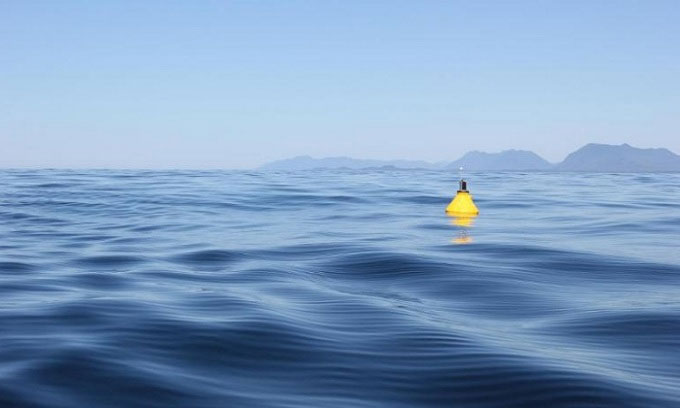Unusual Poison Wave - The killer no one wants to see at sea
The researchers recorded off the coast of Vancouver Island a toxic wave, also known as a killer wave, 17.6m high - three times higher than the surrounding waves.
The wave appeared in November 2020, but research confirming its height was published on 2/2. According to Johannes Gemmrich, one of the leading experts on toxic waves at the University of Victoria, only a few toxic waves have been directly observed and none of this magnitude. The chance of a similar wave occurring is one in 1,300 years.

MarineLabs pontoon off the coast of Ucluelet, British Columbia, records a record toxic wave.
Poison waves are a type of scary waves that appear unexpectedly. "They look like a four-story building jutting out of the water with a big top and a big trench in front," said Scott Beatty, chief executive officer of MarineLabs, which operates buoys that measure the waves. Toxic waves are often more than twice as large as surrounding waves and are difficult to predict. They can come unexpectedly from directions other than the usual wind and wave directions, according to the US National Oceanic and Atmospheric Administration (NOAA).
The first recorded toxic wave was called Draupner, in 1995 off the coast of Norway. It has a height of 25.6m while the surrounding waves are only 12m high. The wave recorded in November 2020 was 17.6m high, 3 times higher than the surrounding waves (6m). Measurements were calculated using a MarineLabs buoy, about 7 km off the coast of Ucluelet, British Columbia.
Such waves can pose a major threat to marine operations and people alike due to their strength and unpredictability. Due to the sudden appearance of toxic waves, the ship's operator was hardly warned in advance and did not have time to change course or react in time, according to Gemmrich.
A common mistake, Gemmrich notes, is that toxic waves are often confused with tsunamis. Although both are big waves, the way they appear is completely different. Toxic waves are generated by the wind and are very rare. Meanwhile, tsunamis are usually born from underwater earthquakes or volcanic eruptions.
Coastal communities are particularly vulnerable to toxic waves. According to Gemmrich, anywhere near the sea can experience toxic waves, although areas with strong ocean currents are more likely. As for Vancouver Island, there have been no reports of toxic wave damage because the wave occurred too far from shore. However, toxic waves can be dangerous if they originate closer to shore. To ensure future safety, the scientific community is actively researching and predicting to prevent damage to marine life and populations. MarineLabs has a network of 26 buoys in the waters around North America and hopes to double the number by the end of the year.
- The mystery of the poisonous killing killing more than 600 men, only 4 drops is dead without a trace
- Students create 'killer frogs' in the laboratory
- Why is Hanoi and North and Central hot and hot?
- Strangely, killer whales make a living for handicapped children
- Video: Watching the whale 'killer' chasing a strange ship
- The power of poison
- Carbon Monoxide - silent killer
- Killer whales can die from ... toothache
- Discovered rare white killer whales
- 26 million years old fossil discovered by ancient killer pigs
- The killer whale finally gave up the corpse after 17 days floating in the ocean
- Mischievous whales use bird trap tips
 Surprised: Fish that live in the dark ocean still see colors
Surprised: Fish that live in the dark ocean still see colors Japan suddenly caught the creature that caused the earthquake in the legend
Japan suddenly caught the creature that caused the earthquake in the legend A series of gray whale carcasses washed ashore on California's coast
A series of gray whale carcasses washed ashore on California's coast Compare the size of shark species in the world
Compare the size of shark species in the world